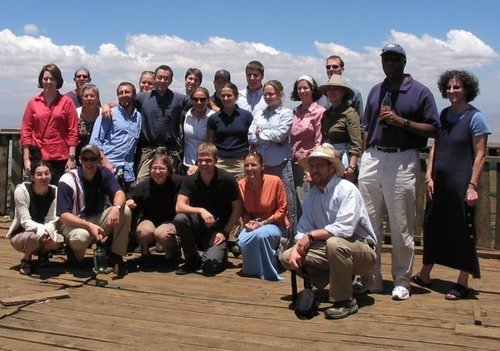 |
| The new Strathmore University campus - I'm told it's the greenest university campus building in Africa |
Now that I understand Tumblr requires users to register to read blog posts, switching over to Blogger. Alas.
#ibmcsc Kenya
I'll try to keep up both, for those Tumblr lovers out there. http://luke-dport.tumblr.com/
One of the trends I've been following from a distance with great interest lo these last five Kenya-less years has been the continuing growth in size and maturity of the tech scene here. And in fact not just in Kenya -
Bongohive ran a crowd sourcing project to count how many incubators there were across the continent and found there were 90 of them. At least two tech incubators have sprung up in Kenya since I last visited in 2009. One is
iHub, which grew out of Ushahidi, the Kenyan-born non-profit tech company that specializes in developing free and open source software for
information collection,
visualization and
interactive mapping. I hope to visit iHub while I'm here. The other is
iLab, at Strathmore University, which is an incubator and research center under the faculty of Information Technology at Strathmore. We were lucky enough to visit iLab today at Strathmore's swanky (relatively) new campus in town.
We had a chance to hear from a couple of students about projects they are working on. Two young women (rookie blogger mistake - not getting the names and contacts of the people you want to mention in your blog!) are developing an app to enable entrepreneurs to conduct name searches via mobile phone as part of the process of registering their business - a process that typically takes a number of time-wasting trips to a government agency downtown. Another is building an app that lets you purchase digital versions of locally published magazines.
Another young woman described an app she's working on to provide fish farmers with data on fish prices and information on fish farm management. What was extra impressive about her was how much she understood about fish farming, and perhaps most importantly, specifics on why fish farmers have not on the whole successful up until now (this will the topic of a future blog here). Among the factors she called out: fish farmers try to save money by feeding their fish food that's recommended for later in the fishes' lives because it's cheaper, when in fact you need to feed the fish a very particular type of food for the first few weeks/months of their lives - and failing to do that means your fish will never grow to a marketable size. While I still think she has a few things to work out how to turn her app idea into a real business, the fact that she understands her end user so well - not just the technology - is encouraging, and a rare combination especially in such a young person.
All this reminds me of the boom years of the Web in the mid and late 90s. Practically overnight, every business under the sun it seemed had to move onto the Web. Here in Kenya now it feels like nearly any transaction that would have previously required a face to face interaction is moving to mobile. With mPesa of course enabling digital payments so many possibilities are opened. The possibilities seem limitless.














